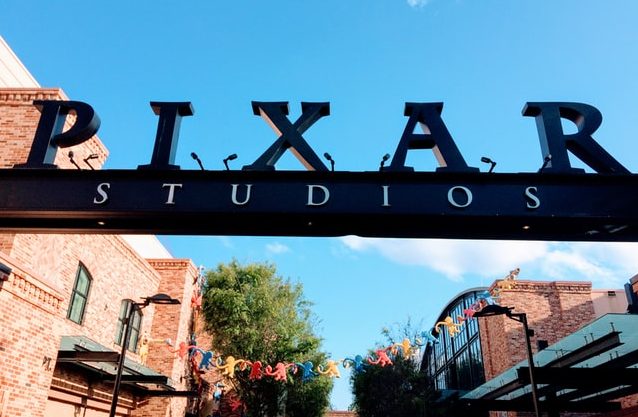Pixar animation films have carved a unique identity for themselves, and they have literally revolutionized the animation film business by adopting innovative strategies. At the same time, their storytelling is emotional, intelligent, heart-warming, and has captivated the audience with breathtaking graphics!
A quick Trivia– Did you know that Toy Story was the first animated film made entirely using a computer, and that was of a feature film duration. It was the highest-grossing film of 1995, at $374 Mn in Earnings against a budget of $30 Mn.
Graphic Group- The Original Pixar
Pixar was originally owned by Lucas films, yes, the Star Wars fame! It was called Graphic Group at Lucas films. The Graphics Group was started in 1979 as a division that manufactured hardware (Pixar Image Computer), produced software, and had a team of animators engaged in making short animation videos.
Steve Jobs, the birth of Pixar, The Walt Disney Deal, and public listing of Pixar
George Lucas wanted to sell off the Graphic Group division. Edwin Catmull- President and Alvy Ray Smith- Executive Vice President, both recruited by George Lucas, had been rejected 45 times by venture capitalists and large corporations searching for an investor.
At the same time, in late 1985, Steve Jobs was losing his hold over Apple Computers and founded NeXT-producing workstations for higher education and business.
In 1986, Steve Jobs invested $10 Mn in the newly independent Pixar and joined the Pixar board as the Chairman. In the years to come, the hardware division was incurring heavy losses. To prevent Pixar from closing down, Steve Jobs further invested capital, eventually totaling $50 Mn, and had control of the company.
In April 1990, Pixar sold off its hardware division and its allied proprietary hardware and software technology.
Even after the hardware division spin-off, Pixar continued to be negative. Steve Jobs contemplated selling Pixar. However, he decided to give Pixar one more chance when Toy Story 1 was in the making. Pixar had a three-movie deal with Disney for $26 Mn.
Toy Story was released in 1995 and grossed $358 Mn worldwide. Subsequently, when Pixar was listed on the bourses, it was the biggest IPO of the year, and the stock price ranged from $22 to $45, to finally close at $39.
In 2006, Disney bought Pixar for a whopping $ 7.4 Billion, and this elevated Steve Jobs to the single largest individual shareholder with 7%, and he made his way on the board of Disney.
Experiential Marketing by Disney – A fine example of Marketing 3.0
The MovieMaking Process- The differentiator of Pixar Business Strategy
Whether it manufactures products, provides services, or, like in this case, produces animation movies, Like Pixar, every company has a business philosophy at its heart, on which the business model and strategies are formed.
Movie-making is more about strategy than creativity for Marvel
For Pixar, the core business strategy is its movie-making process. Being into the animation film business, Pixar knew it was essential to make movies that are “liked” and “high quality.” One might argue that you can make movies that are liked (or end up making some which are not, that’s understood), but how can one make the high-quality product from a film per se? It’s not a product or a service. The animation is animation at the end of the day!
The movie-making process at Pixar consists of three cornerstones – the proprietary animation software, the DNA-deep culture of quality control, and focus on people.
The animation software
Since its formation as the Graphics Group at Lucas, Pixar was subsequently involved in manufacturing hardware and software. When the hardware division was sold in 1990, Pixar released its proprietary software tools in the open market, RenderMan used for 3D rendering and Typestry, used for rendering text in 3D.
From 1988, Pixar used another proprietary software tool called “Menv” an abbreviation for “Modelling ENVironment.” Menv was a very advanced tool and allowed the animators to give amazing effects to the animation characters. It was Pixar’s primary animation tool for almost two decades.
Around 2005, Pixar started developing Presto, another animation tool, using the experience gained & challenges faced from using Menv, the changing visual effects scenario of the animation industry. Pixar is currently using Presto as its primary animation tool, and the software is not available for use outside of Pixar to maintain the competitive advantage and is learned to be quite advanced to its peers.
The most significant advantage of Presto is its live environment where the animators can be made and review changes in real-time, cutting downtime for corrections. Renderman continues to be used for rendering 3D images.
Culture of quality control and Pixar’s Brain Trust Model
In general, filmmaking can be thought of as a process similar to the manufacturing process, with work passed to various departments down in the assembly line. But not at Pixar
Employees at Pixar, irrespective of their level, are empowered to question the process, the protocols, assumptions, innovate, make mistakes, and learn from correcting them.
To attain quality control, Pixar has implemented Braintrust Model.
In simple terms, Briantrust could be understood as a committee of current/former directors, writers. Basically, people who have creative backgrounds are excellent at storytelling and importantly possess empathy. The idea behind this is that in making a movie, the director gets too immersed in managing the different aspects of filmmaking that they may lose grip of the storytelling in a way that was sought at the beginning.
During various stages of production on the director’s demand, the film is reviewed by the braintrust, and very candid and frank feedback and recommendations are given. The beauty of this system is that the braintrust has no authority over the director, and the director is not needed to follow one or any of the recommendations. One of the best outcomes of this braintrust process was demonstrated when Toy Story 2, which was slated for a direct-to-video release, was later released on theatres, and the film grossed $500 Mn.
Due to such a strong culture of quality control and feedback gained through braintrust, Pixar took a long time to finalize the story. Continuous improvements are being made even as the making has begun to ensure the storytelling is as per their standards. No wonder Pixar takes on an average four to seven years to make a movie.
Stability of workforce
In the filmmaking process, professionals from varied backgrounds are hired for a film, and just like a project, they move from one film to another.
Pixar, on the other hand, has benefitted a lot from the long-term team. The employees at Pixar and more so from the creative and animation teams, writers, directors, etc., move from one project to another, however, within Pixar. Employees get a chance to work in different groups.
Another significant advantage of this model is that it reduces the learning curve of the job. This is especially important when Pixar uses proprietary software for its films.
How have Pixar films performed?
Pixar has made 24 movies till now. The below financial synopsis includes all the movie numbers except for Soul (Dec 2020 release) and Luca (June 2021 release), where complete worldwide box office collections are unavailable.
| Total Movies Released | Total Production Budget | Worldwide Box Office |
| 24 | $3,338,500,000 | 14,68,50,65,061 |
Pixar movies have been made with a minimum production budget of $30 Mn for Toy Story 1, and films with the highest production budget of $200 Mn include Incredibles 2, Toy Story 4, and Onward. Its worldwide box office collection range from a minimum of $133 Mn for Onward, whereas the full collection is $1,242 Mn for Incredibles 2.
Toy Story is the #1 in rank in terms of ROI at 1118%, or 111.8 times the production budget was earned. Onward is the only movie that failed to earn its production budget. Based on the available partial information, Soul and Luca also might not have earned back their investment.
A non-inflation adjusted simple average production budget per movie is approx. $151 Mn, whereas the corresponding worldwide box office collection, is approx. $658 Mn, representing a return of 334% or 3.34 times the production budget.
-AMAZONPOLLY-ONLYWORDS-START-
Also, check out our most loved stories below

Why did Michelin, a tire company, decide to rate restaurants?
Is ‘Michelin Star’ by the same Michelin that sells tires, yes, it is! But Why? How a tire company evaluations became most coveted in the culinary industry?

Starbucks prices products on value not cost. Why?
In value-based pricing, products are priced based on the perceived value instead of cost. Starbucks has mastered the art of value-based pricing. How?

Nike doesn’t sell shoes. It sells an idea!!
Nike has built one of the most powerful brands in the world through its benefit-based marketing strategy. What is this strategy and how Nike has used it?

Domino’s is not a pizza delivery company. What is it then?
How one step towards digital transformation completely changed the brand perception of Domino’s from a pizza delivery company to a technology company?

Why does Tesla’s Zero Dollar Budget Marketing Strategy work?
Touted as the most valuable car company in the world, Tesla firmly sticks to its zero-dollar marketing. Then what is Tesla’s marketing strategy?

Yahoo! The story of strategic mistakes
Yahoo’s story or case study is full of strategic mistakes. From wrong to missed acquisitions, wrong CEOs, the list is endless. No matter how great the product was!!

Apple – A Unique Take on Social Media Strategy
Apple’s social media strategy is extremely unusual. In this piece, we connect Apple’s unique and successful take on social media to its core values.
-AMAZONPOLLY-ONLYWORDS-END-
















